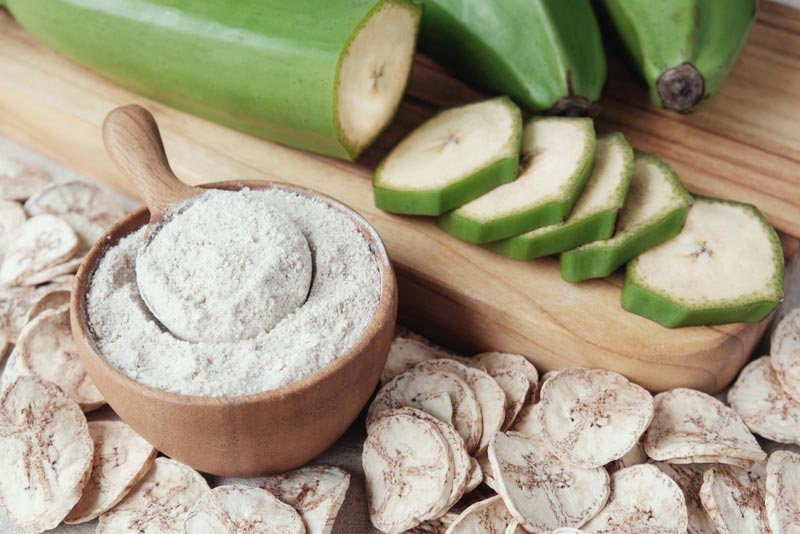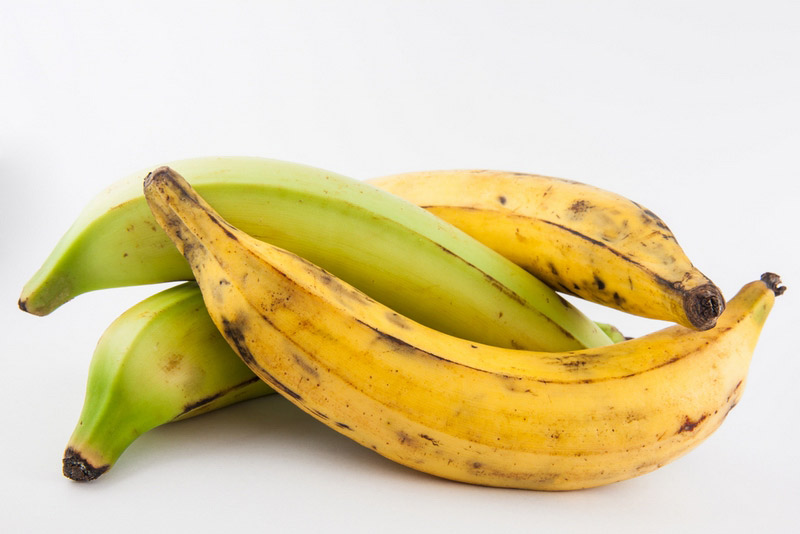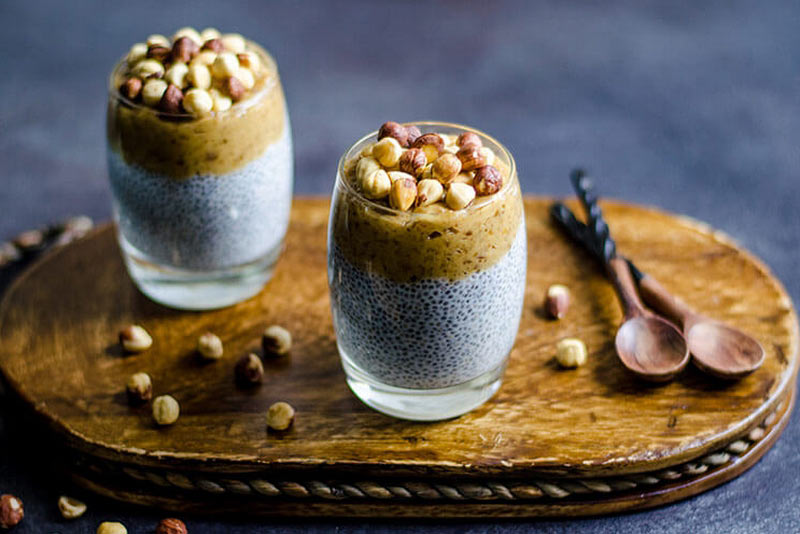
In the past few years, there’s been a huge awakening in the scientific community regarding the role of gut health in the development of a wide range of diseases.
It turns out our guts rule our health more than we ever thought they did, with poor gut health being linked to obesity, mental disorders, and even autism. (1, 2, 3)
While many methods can help improve gut health, such as taking probiotics and eating an anti-inflammatory diet, one method in particular shows significant promise. Enter: resistant starch.
What Is Resistant Starch?

Resistant starch is a type of prebiotic starch that “resists” digestion in our stomachs. While it might seem strange that this would be beneficial, this process actually creates a cascade of great effects on our entire body.
Resistant starch passes through our stomach and small intestine intact. However, once it reaches our colon, it begins to feed certain good strains of bacteria residing there. This helps increase the amount of good bacteria in our gut, resulting in benefits like reduced inflammation, weight loss, better digestion, and more.
In addition, when our bacteria feed on resistant starch, they produce fatty acids through fermentation. Butyrate is one of the most promising fatty acids released during this process, with benefits ranging from improving metabolic diseases to fighting colorectal cancer. (4)
Types of Resistant Starch

There are four types of resistant starch:
Type 1: This type of resistant starch is found in the cell walls of grains, legumes, and seeds, and is unable to be broken down by humans.
Type 2: This type of starch is the kind that is “indigestible” in its raw state (hence the name, “resistant” starch), and is found in foods like raw potatoes, unripe bananas, and plantains. Cooking these foods inactivates this type of resistant starch, making it digestible.
Type 3: This type of starch is also referred to as retrograde starch. This type is created after you’ve cooked resistant starch foods like potatoes and then let them cool. To keep this resistant starch in place, the food must not be reheated above 130oF.
Type 4: Type 4 resistant starch is the type you should avoid. Also called “hi-maize resistant starch,” this form is a synthetic version with unknown side effects.
Here, we’ll be focusing on the benefits of Types 2 and 3, since these are the forms that have been shown to be beneficial in studies. Keep these in mind when we discuss how to get more resistant starch in your diet.
Benefits of Resistant Starch
1. Boosts Gut Health

Consumption of resistant starch can improve the ratio of good bacteria in your gut, which can help boost immunity and ease gas and bloating. (5)
In addition, resistant starch can lower the pH of your intestines, making it inhospitable to bad bacteria and microbes. This, along with its ability to increase blood flow through your colon and strengthen the lining of your intestines, make resistant starch an all-star when it comes to improving digestion as a whole. (6)
2. Increases Mineral Absorption
As we saw earlier, resistant starch is able to lower the pH of your intestines. Not only does this reduce bad bacteria growth, but it also increases your ability to absorb minerals.
Also, the increased blood flow resistant starch promotes – along with a stronger colon lining helping to transport more minerals and nutrients through your colon – an increased ability to heal your gut if it needs healing, while maintaining overall health. (7)
3. Lowers Glucose Levels

Remember how we discussed that resistant starch remains undigested as it passes through your digestive tract?
It turns out this is great news for your glucose levels, especially if you are suffering from blood sugar issues. One study showed that blood glucose and insulin responses were lower in borderline diabetic adults following a resistant starch meal. (8) In addition, studies have also shown that consuming resistant starch results not only in less glucose spikes during a meal, but also carries over into your next meal. This helps keep your glucose levels stable throughout the day. (9)
4. Improves Insulin Sensitivity
Along with lowering glucose levels, resistant starch also helps keep your body sensitive to the blood sugar-lowering effect of insulin.
When we experience blood sugar issues, this is most likely due to a phenomenon called insulin resistance. In this scenario, your body’s cells stop responding to the effect of insulin due to overuse, causing your blood sugar levels to stay high.
Resistant starch helps improve your body’s sensitivity to insulin, with studies showing that just 15 to 30 grams of resistant starch per day can show improved insulin sensitivity in obese individuals. (10)
5. Curbs Cravings
Studies show that resistant starch is one of the best types of starch to consume if you want to feel fuller for longer. (11) This may be due to the fact that the starch remains indigestible as it makes its way to your colon, creating a sense of fullness. Resistant starch also increases nutrient absorption, which can reduce cravings for specific foods.
6. Promotes Weight Loss

There are several mechanisms that make resistant starch helpful when it comes to weight loss. The first is its ability to improve your gut microbe population, as a more diverse gut bacteria has been associated with a leaner body mass. (12)
The second is its ability to reduce glucose spikes after meals, which can result in less fat storage. (13) Add to this resistant starch’s ability to improve satiety and decrease your appetite, and you have a powerful weapon in the fight against excess pounds. (14)
7. Reduces Inflammation
Butyrate, the beneficial fatty acid produced by the fermentation of resistant starch in your colon, also has potent anti-inflammatory effects. Studies show that it helps decrease intestinal permeability, which helps reduce the chances of your gut lining becoming irritated and inflamed.
Resistant starch also helps remove and keep toxins out of your gut, resulting in less inflammation from chemicals and other toxins throughout your body. (15)
8. Lowers Risk of Colorectal Cancer
Research shows that consuming resistant starch may help prevent your chances of developing colorectal cancer. (16) Scientists believe this to be due to a combination of resistant starch’s ability to increase cell death of precancerous cells, reduce inflammation, and protect your DNA from damage. (17)
Foods High in Resistant Starch

While white potatoes are a well-known source of resistant starch, they aren’t Paleo and we wouldn’t recommend eating them on a regular basis. Instead, reach for green bananas, cassava, tapioca starch, and plantains. Plantain flour is similar to raw potato starch, and you can simply add it to smoothies, cold soups, chia pudding, and even water for a high dose of resistant starch.
Resistant Starch Dosage: Start Slow
If you don’t have a habit of consuming plantains or greens bananas, you might want to take it slow with resistant starch at first. This is because when you begin to feed your good bacteria (and the bad bacteria die off), it can create gases that result in bloating, especially if you overdo it.
Try starting at the lower end of the dosage recommendations (1 teaspoon raw plantain starch in a smoothie or glass of water, or a small amount of cooled potatoes) and work your way up to higher dosages clocking in at around 15-30 grams per day. For reference, one tablespoon of resistant starch contains roughly 8 grams of resistant starch.
Tip: Take Probiotics with Resistant Starch
If you’re using resistant starch to improve your gut health, you should consider taking probiotics with your resistant starch. This is because resistant starch helps feed good bacteria. You can take probiotics in supplement form or incorporate probiotic-rich foods like sauerkraut and other pickled veggies.

(Read This Next: 9 Surprising Health Benefits of Vitamin D)
